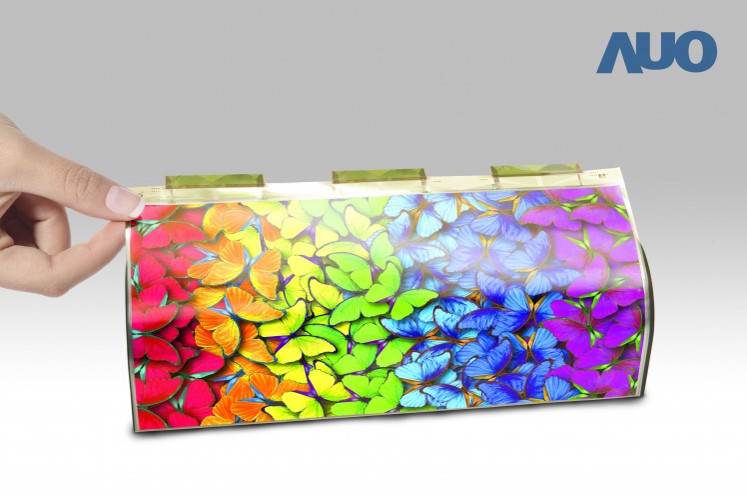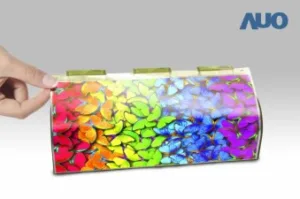microLED is considered by some to be the fourth generation flat panel display technology after plasma, LCD and OLED. It combines the best features of LCD and OLED, with higher brightness, significant increases in power efficiency and reliability and the potential for lower cost. Many working prototypes have come to market but no volume production yet. microLED display is Progressing Towards Commercialization(my last Display Daily article). Can microLED compete with LCD and OLED in the display application market?

Super Size Display: Video wall, Signage, Public display, TV..
Samsung showcased a modular 146-inch microLED TV called “The wall” at CES 2018, and followed it with a 219-inch version in 2019 and a 292-inch in 2020. These products were based on microLED chips where die sizes were larger than 50 microns, and products were based on a passive matrix mode. Very large size self-emissive displays with >50 microns die size are considered as miniLED display rather than microLED
- At CES 2020 Konka showed a 236-inch microLED technology based large display and LGE showed a 145-inch screen.
- Samsung’s 75-inch microLED TV with active matrix driver based on Playnitride <50microns chip, modular LTPS backplane, was first showcased at CES 2019.
- Samsung plans to produce 75-inch and other size microLED TVs by 2021, in partnership with Epistar and Playnitride.
- Sony first demonstrated a 55-inch FullHD microLED TV based on its crystal LED technology in 2012 but it was never commercialized.
- Sony has started selling modular crystal LED super size displays targeting applications such as boardrooms, theme parks, museums, retail showrooms, corporate lobbies, studios, and other commercial markets.
- Sony’s display is based on active matrix driving technology integrating RGB microLEDs and micro ICs and provides true black with a high contrast ratio even in a bright environment.
- The system has scalability: with no bezel they can be tiled up to a large-scale display system seamlessly with free size and free aspect ratio.
These super size commercial displays are very expensive and can cost hundreds of thousands of dollars. The displays are targeted for commercial products and can compete directly with direct LED video-wall products. With very high brightness, true black, very high contrast, design flexibility, microLED super size displays can provide higher performance with low power consumption. But to increase adoption rates, cost has to come down: die size has to go down, but that will reduce efficiency and lifetime.
It will be extremely challenging for microLED TV to compete with LCD, QDLED, OLED and even miniLED TV in the near term. Industry experts believe die size for microLED TVs has to go down to <10microns for 4K TV and <5 microns for 8K TV to be more price competitive.
 Samsung’s ‘The Wall’ is selling into boardrooms
Samsung’s ‘The Wall’ is selling into boardrooms
By the year 2021 and 2022 about eight to ten 10.5 Gen fabs with huge capacity are expected to be in production making LCDs and AMOLEDs. Samsung Display is also working on QDOLED TV products. It will be extremely hard for microLED display to be price-competitive in the 75” and below consumer TV market.
Small Size Display: Wearable, Smartwatch..
Wearable products such as smartwatch and activity tracker have a real need for thinner, lighter, lower powered, flexible displays. Their small size displays need high resolution and higher brightness for outdoor use with longer battery life. microLED can meet these requirements and outperform the currently dominant OLED display.
- Apple is reportedly working on microLED after acquiring Luxvue and is said to be setting up MiniLED and microLED fab ($334 million investment) in Taiwan in partnership with AUO and Epistar.
- RiTdisplay & PlayNitride have shown a 1.25″ display with a glass substrate and 0.9-inch flexible display.
- Glo has shown a 1.6″ (JDI) and 1.8″ (Kyocera) full color microLED wearable display (LTPS backplane).
- Apple is currently using 1.57-inch and a 1.78-inch AMOLED display for Apple watch products. Apple may be introducing microLED wearable in 2021.
If Apple does shift to microLED from OLED for smartwatch it will have a significant impact on the display industry. Apple could also follow the strategy of using microLED only for premium models and OLED for others. To reduce costs, a die size design of <20 microns is needed for microLED. Its high brightness and significantly lower power consumption ability can be a real benefit for battery-powered devices like smartwatches.
Very Small Size Display: AR, VR,..
The extremely high brightness capabilities of microLED can be a major advantage for devices such as AR, VR and HUDs (Heads Up Display) where waveguides are commonly used to place images in a headset or in glasses in front of the eyes (due to light loss issues). Even though microLED has many advantages for micro-display applications, there are also challenges such as efficiency, full color technology, and better control of defective pixels.
The VR/AR market is expected to grow in the next five years.
VR – Companies such as HTC and Oculus have developed more stand-alone, all-in-one devices for VR with lower prices. OLED display has been gaining higher acceptance in the VR market due to its high refresh rates, higher resolutions, and higher contrast for either direct view or micro display. microLED can match and exceed OLED performance. Its lower power consumption and lower battery size capability can transform bulky VR sets to lighter versions.
AR – microLED with high brightness, high resolutions and low power consumptions can enable flexible design and light weight AR glasses. Apple is expected to introduce AR smart glasses within a few years. AR adoption has been slow due to high prices and low consumer acceptance. Products such as Microsoft Hololens, Google’s Glass seem to be more accepted in the enterprise and vertical market rather than the consumer market.
- Jade Bird Display – 0.31″ monochrome green micro-display for AR/VR (3 million nits, 5,000 PPI) and a 0.3″ monochrome blue micro-display (150K nits, 10K PPI)
- VueReal – 30K PPI, 100K nits MicroLED microdisplay
- Glo – full color microLED for AR/VR head set based on RGB LED
- Plessey – 1080P microLED for AR/MR, 0.7inch blue monochrome MicroLED displays (using JDC’s silicon backplane)
- Plessey and Compund Photonics – co-developed 0.26-incg integrated MicroLED display module for AR/MR application
- Pleassey – GaN-on-Si technology. It recently announced its agreement with Facebook/Occulus for product development
As it can be seen from the above, monolithic microLED microdisplays can achieve very high brightness and resolution. Many consumer electronic companies are evaluating GaN-on-Si LED epiwafer (better cost than GaN-on-sapphire) for their microLED production. It can reduce cost and increase yield in manufacturing scalable to 200mm and even 300mm and also by using current CMOS facilities.
For a full color solution, sometimes QDot color conversion technology can be beneficial. Nanosys and DIC corporation have jointly demonstrated the possibility of inkjet-printed QD as the color conversion layer on microLED array. MicroLED has the potential to challenge OLED in the wearable and VR/AR market.

Medium Size Display: Automotive..
At CES 2020 many companies showed end-to-end design solutions for AR head-up displays (HUDs) including Altia, BMW and Futurus Technology. Futurus was showing MR (Mixed Reality) technology for safe and immersive experiences in next generation vehicles. Technology can move towards smart window-shielsd in future, combined with safety and entertainment info. MicroLED can provide higher brightness and higher reliability for HUD applications.
AUO and Playnitride have co-developed a 9.4-inch flexible microLED display, with a PI- backplane geared towards auto display market. The company used same technique as flexible OLED to remove PI from a substrate after transferring the display devices. AUO has also demonstrated 12-inch microLED display with LTPS glass backplane for auto applications. The auto display market with its long design cycles may take a few years before mass production.

Transparent Displays
VueReal has shown a MicroLED array with>60% transparency and 200 ppi resolution using a micro-printing process. Tianma exhibited a 7.56- inch transparent full color microLED with a LTPS glass backplane with Playnitride chips. China Star has shown a 3.5-inch transparent IGZO glass-based backplane. Application targets for these displays are still evolving. Some believe this can help microLED to provide product differentiation in the market to compete with traditional LCD and OLED.
Implications for the Application Market
The LCD and OLED industries and products are moving targets, both still improving in performance and reducing their costs. Can microLED potentially match the price and performance of LCD and OLED? In theory, it can. But as history has shown, theoretical potential takes years to be realized and sometimes never gets there.microLED display has the potential to be successful in many different application markets. (SD)
Sweta Dash is the founding president of Dash-Insights, a market research and consulting company specializing in the display industry. For more information, contact [email protected] or visit www.dash-insights.com

